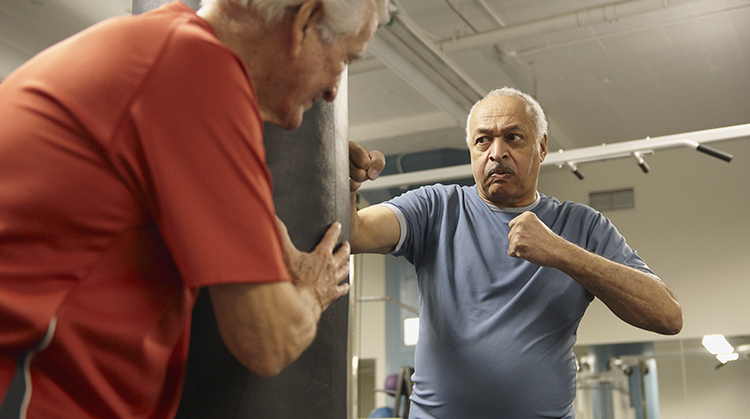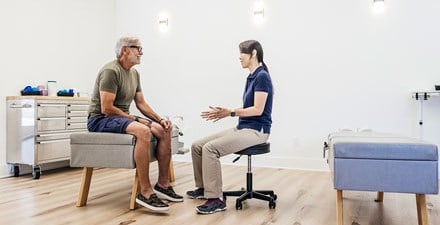
The effects of Parkinson disease include difficulty with movement and thinking.
Although symptoms and their severity can vary widely, the chronic degenerative disease affects brain chemicals responsible for control of body movements, thought processes, decision making, moods, and body awareness and positioning.
However, this does not mean that people with PD can't participate in sports they like; in fact, the opposite is true!
Research shows that a consistent exercise program, including fun sports activities, can improve all of those body functions, plus walking balance, strength, flexibility, and fitness in people with PD.
A physical therapist can help people with PD participate in these sports safely by conducting a physical evaluation and developing a personalized treatment plan that includes the person's preferred sport at the right level and intensity.
These sports and activities have been shown by research to relieve symptoms of PD include:
1. Boxing
The upper body motions of boxing (such as punching, jabbing, protecting the face, aiming the fists) help to restore strength, endurance, body positioning and awareness, and hand-eye coordination. The lower body actions (such as lunging, weight shifting from one foot to foot the other) help improve leg strength, endurance, and balance.
2. Cycling
The repetitive motion of pedaling a bicycle has been shown to decrease tremors, improve walking ability and arm and leg control, increase endurance, strength, and sitting balance, and improve mood.
3. Tai chi
The slow and controlled flowing movement of tai chi has been found to help with coordination, body positioning and awareness, and standing balance.
4. Dancing
The constant changing movement patterns in dance help improve coordination, flexibility, body positioning and awareness, balance while moving, and mood. Simply hearing music helps some people to move better, as music seems to stimulate brain signals to muscles in a different way. Many styles of dance have been shown to be effective, including ballroom, Latin, waltz, modern dance, two-stepping, and line dancing.
5. Karate
Training in "katas" (set sequence of karate moves) and fighting techniques improves balance, mood, and thinking ability.
6. Weight training
Lifting weights (or doing other kinds of "resistance" training) improves strength, endurance, and balance while moving. Weight lifting also reduces fatigue.
Participating in any of these activities for up to 12 weeks has been shown to have long-lasting beneficial effects. Work with your physical therapist to pick the most appropriate sport for you.
Physical therapists are movement experts. They improve quality of life through hands-on care, patient education, and prescribed movement. You can contact a physical therapist directly for an evaluation. To find a physical therapist in your area, visit Find a PT.


